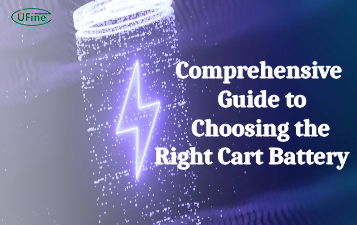What are custom battery packs? Custom battery packs are specially designed power sources tailored to specific needs.
Why are they important? They offer numerous benefits, such as longer lifespan and improved performance.
But what exactly goes into making them? Let’s explore the components and design considerations. Once you understand their manufacturing process, you’ll see how versatile custom battery packs are across various applications.
Part 1. What are custom battery packs?
Custom battery packs are specialized power sources uniquely designed to meet specific requirements. Custom battery packs tailor their design to fit the exact needs of a particular device or application, unlike off-the-shelf battery options. They are assembled using carefully selected components and configured to deliver optimal performance and efficiency.
Importance of Customization
- Tailored Performance: Customization ensures that the battery pack matches the device’s power requirements, optimizing its performance.
- Space Efficiency: Custom designs allow for the utilization of available space within the device, enabling more compact designs.
- Longevity: Engineers design custom packs to handle the device’s demands, resulting in a longer lifespan.
- Safety Features: Custom packs can integrate specific safety features, ensuring reliable operation and minimizing risks.
- Cost-Effectiveness: Though initially pricier, they are cost-effective in the long run due to optimized performance and reduced need for replacements.
Part 2. Benefits of custom battery packs
Improved Performance
Custom battery packs boost device performance by aligning perfectly with specific power requirements. This alignment optimizes efficiency and ensures devices operate at their best.
Enhanced Flexibility
Custom packs offer versatility in design and setup. Unlike standard options, they can adapt to various device specifications, providing tailored solutions for different needs.
Seamless Integration
Custom battery packs seamlessly fit into devices, enhancing functionality and user experience. Their design ensures smooth operation and compatibility with device systems.
Increased Reliability
Custom packs meet stringent quality standards, guaranteeing durability and reliability. High-quality materials and components minimize downtime and maintenance needs.
Enhanced Safety Measures
Custom packs prioritize safety with tailored features and fail-safe mechanisms. From advanced management systems to protective enclosures, safety is paramount.
Part 3. Components of custom battery packs
Battery Cells
Battery cells are the fundamental building blocks of custom battery packs. They come in various chemistries like lithium-ion, nickel-cadmium, or lead-acid, each with advantages and disadvantages. These cells are selected based on energy density, voltage, and discharge characteristics to meet the application’s specific needs.
Battery Management System (BMS)
The BMS is a crucial component that monitors and manages the battery pack’s performance. It ensures safe and efficient operation by regulating charging, discharging, temperature, and voltage. The BMS also protects against overcharging, over-discharging, and short circuits, prolonging the lifespan of the battery pack and ensuring user safety.
Enclosure
The enclosure provides physical protection and housing for the pack’s battery cells and other components. Typically, manufacturers construct it from durable materials like plastic or metal. Designers create it to withstand mechanical stress, environmental factors, and potential impacts. The enclosure also incorporates ventilation and insulation to maintain optimal operating conditions for the battery cells.
Connectors and Wiring
Connectors and wiring facilitate the electrical connections between the battery cells, BMS, and external devices. They ensure proper communication and power transmission within the battery pack, enabling seamless integration with the device it powers. Depending on the application’s specific requirements, connectors come in various types and configurations, including wire-to-wire, wire-to-board, and board-to-board connections.
Thermal Management System
The thermal management system regulates the battery pack’s temperature to prevent overheating and thermal runaway. It may include heat sinks, thermal pads, or cooling fans to dissipate excess heat generated during operation. Proper thermal management is essential for maintaining the performance and safety of the battery pack, especially in high-power or high-temperature environments.
Packaging and Labeling
Packaging and labeling ensure compliance with regulatory standards and provide essential information about the battery pack, such as capacity, voltage, and manufacturer details. Proper labeling helps users correctly identify and handle the battery pack, reducing the risk of misuse or accidents. Packaging also includes insulation and cushioning materials to protect the battery pack during transportation and handling.
Part 4. Design considerations for custom battery packs
Voltage and Capacity Requirements
When designing a custom battery pack, it’s crucial to determine the voltage and capacity requirements. The voltage must match the device’s needs to ensure proper operation. Capacity, measured in milliamp-hours (mAh) or amp-hours (Ah), affects how long the device can run before recharging. These parameters must be carefully calculated based on the device’s power consumption and usage patterns.
Size and Shape
The size and shape of the battery pack are critical to ensure it fits within the device. Designers must consider the available space and any physical constraints of the device. This often involves creating a battery pack that maximizes energy density while maintaining a form factor that fits seamlessly into the device’s design.
Weight
Weight is another critical factor, especially for portable devices. A lighter battery pack can improve the device’s portability and user experience. Designers must balance the need for a lightweight battery with the requirement for sufficient power and capacity.
Thermal Management
Thermal management is essential to prevent overheating and ensure safe operation. Designers must incorporate heat sinks, cooling fans, or thermal pads to dissipate heat effectively. Proper thermal management ensures the battery pack operates within safe temperature ranges, prolonging its lifespan and maintaining performance.
Safety Features
Safety is a top priority in battery pack design. This includes adding overcharge protection, over-discharge protection, and short-circuit protection. The Battery Management System (BMS) monitors and manages these safety aspects. Physical safety features such as durable enclosures and proper insulation are essential to prevent damage and ensure user safety.
Regulatory Compliance
Custom battery packs must comply with various regulatory standards and certifications. These standards ensure the battery pack is safe and reliable for consumer use. Compliance with regulations like UL, CE, and RoHS is often required, and designers must ensure their battery packs meet these standards through rigorous testing and quality control.
Environmental Conditions
Designers must consider the environmental conditions in which the battery pack will operate. This includes factors such as temperature, humidity, and exposure to dust or water. The battery pack may need additional protective features like sealing, rugged enclosures, or special coatings for harsh environments to ensure reliable performance.
Connector Types
The types of connectors used in the battery pack are essential for ensuring compatibility with the device. Designers must choose connectors that provide secure and reliable connections. Common types include wire-to-wire, wire-to-board, and board-to-board connectors. The choice depends on how the battery pack integrates with the device’s design.
Longevity and Lifecycle
The longevity and lifecycle of the battery pack are crucial for user satisfaction and cost-effectiveness. Designers must select high-quality cells and components that ensure a long operational life. Additionally, they must design the pack to withstand numerous charge and discharge cycles without significant degradation.
Part 5. The manufacturing process of custom battery packs
Design and Planning
The manufacturing process begins with design and planning. Engineers gather requirements and create detailed designs. They decide on the battery type, voltage, capacity, and dimensions. They also design safety features and ensure the pack meets all standards.
Sourcing Components
Next, the manufacturer sources high-quality components. This includes battery cells, Battery Management Systems (BMS), connectors, wiring, and enclosures. Choosing reliable suppliers is crucial for quality and performance.
Assembling the Cells
The assembly starts with arranging the battery cells. We connect the cells in series or parallel, depending on the required voltage and capacity. Manufacturers use spot welding or soldering to make these connections secure and efficient.
Installing the BMS
We then install the Battery Management System (BMS). The BMS monitors the battery pack, ensuring it operates safely. It manages charging and discharging and protects against overcharging and short circuits.
Adding Connectors and Wiring
After installing the BMS, we add the connectors and wiring. These components ensure the battery pack can connect to the device it will power. Proper wiring and secure connectors are essential for reliable performance.
Assembling the Enclosure
Next, we place the cells, BMS, and wiring in the enclosure. The enclosure protects the battery pack from physical damage and environmental factors. Manufacturers usually make it from durable materials like plastic or metal.
Testing and Quality Control
Once assembled, the battery pack undergoes rigorous testing. Tests check for performance, capacity, and safety. This includes stress tests, charge and discharge cycles, and temperature tests. Quality control ensures each pack meets high standards before shipping.
Final Packaging
Finally, manufacturers package the battery pack for shipment. Packaging includes labels with necessary information like voltage, capacity, and safety warnings. Proper packaging protects the battery during transport and storage.
Part 6. Applications of custom battery packs
Medical Devices
Custom battery packs play a vital role in medical devices. They power equipment like pacemakers, defibrillators, and portable monitors. These battery packs need to be reliable and safe. They often include features like long life and high energy density. This ensures that medical devices work correctly and safely for long periods.
Consumer Electronics
Manufacturers use custom battery packs in smartphones, tablets, and laptops in consumer electronics. These devices need powerful and compact batteries. Custom battery packs provide the energy required while fitting into small spaces. They also help devices run longer on a single charge.
Electric Vehicles (EVs)
Electric vehicles rely on custom battery packs for power. Designers create these packs to store a large amount of energy. This allows EVs to travel long distances on a single charge. They also need to charge quickly and last many years. Custom battery packs meet these needs, making electric cars more practical and efficient.
Renewable Energy Storage
Custom battery packs are essential in renewable energy systems. They store energy from solar panels and wind turbines. Devices utilize this stored energy when there is no sunlight or wind. Custom packs help manage the energy supply, making renewable energy more reliable and effective.
Industrial Equipment
Industrial equipment like forklifts, robots, and backup power systems use custom battery packs. These packs need to be solid and durable. They must work in harsh conditions and provide steady power. Designers create custom battery packs to meet these strict requirements.
Aerospace and Defense
Manufacturers use custom battery packs in drones, satellites, and military equipment in aerospace and defense. These applications need batteries that are lightweight and have high performance. Custom battery packs offer the right power, weight, and durability balance. They ensure these critical systems work flawlessly.
Portable Tools
Portable power tools, such as drills and saws, depend on custom battery packs. These tools need batteries that provide high power and can recharge quickly. Custom battery packs ensure that these tools are ready to use whenever needed and can handle the demands of tough jobs.
Part 7. Final words
Custom battery packs are essential in many fields. They power medical devices, consumer electronics, and electric vehicles with precision and reliability. From renewable energy storage to industrial equipment, their tailored designs ensure optimal performance and safety. By understanding their components, design considerations, and applications, we see how vital custom battery packs are in our daily lives and future technologies.
Related Tags:
More Articles

Comprehensive Guide to Choosing the Right Cart Battery
Choosing the right cart battery ensures optimal performance and longevity. This guide covers cart battery types and helps you make an informed choice.
The Ultimate Guide to 18650 Button Top Battery
18650 button top batteries are popular for their high energy density and reliability. This guide covers their key features, usage, and maintenance tips.
The Power of Slim: Unveiling the Potential of Flat Lithium Ion Battery
Flat lithium-ion batteries power devices from phones to vehicles. This article explores their design, benefits, types, applications, charging, and safety.
The Comprehensive Guide to Battery Balancing and Battery Balancer
Battery balancing and balancers optimize performance, longevity, and safety. This guide covers techniques and tips for choosing the right balancer.
10 Key Facts About Drone Battery for 2024
Uncover crucial insights with "10 Key Facts About Drone Battery for 2024." Learn the latest trends and essential details on drone batteries.




